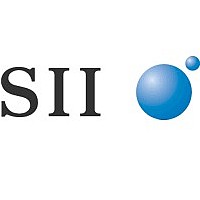S-8261 Seiko Instruments, S-8261 Datasheet - Page 19

S-8261
Manufacturer Part Number
S-8261
Description
Battery Protection IC for Single-Cell Pack
Manufacturer
Seiko Instruments
Datasheet
1.S-8261.pdf
(36 pages)
Available stocks
Company
Part Number
Manufacturer
Quantity
Price
Company:
Part Number:
S-8261AAGMD-G2GT2G
Manufacturer:
NXP
Quantity:
1 001
Company:
Part Number:
S-8261AAGMD-G2GT2G
Manufacturer:
SEIKO
Quantity:
48 000
Part Number:
S-8261AAGMD-G2GT2S
Manufacturer:
SEIKO/精工
Quantity:
20 000
Company:
Part Number:
S-8261AAJBD-G2J-TF
Manufacturer:
MOLEX
Quantity:
51 362
Part Number:
S-8261AAJMD-G2J-T2
Manufacturer:
SEIKO/精工
Quantity:
20 000
Company:
Part Number:
S-8261AAJMD-G2JT2G
Manufacturer:
SEIKO
Quantity:
93 000
Part Number:
S-8261AAJMD-G2JT2G
Manufacturer:
SEIKO/精工
Quantity:
20 000
Company:
Part Number:
S-8261AAJMD-G2JT2S
Manufacturer:
SEIKO
Quantity:
93 000
Part Number:
S-8261AAJMD-G2JT2S
Manufacturer:
SEIKO
Quantity:
20 000
Part Number:
S-8261AAMMD-G2MT2S
Manufacturer:
SEIKO/精工
Quantity:
20 000
Rev.1.9
4. Overdischarge Condition
5. Charger Detection
6. Abnormal Charge Current Detection
When the battery voltage falls below the overdischarge detection voltage (V
the normal condition and the detection continues for the overdischarge detection delay time (t
longer, the S-8261 Series turns the discharging control FET off to stop discharging. This condition is
called the overdischarge condition. When the discharging control FET is turned off, the VM pin voltage
is pulled up by the resistor between VM and VDD in the IC (R
the VM and VDD then is 1.3 V (typ.) or lower, the current consumption is reduced to the power-down
current consumption (I
The power-down condition is released when a charger is connected and the voltage difference between
the VM and VDD becomes 1.3 V (typ.) or higher. Moreover when the battery voltage becomes the
overdischarge detection voltage (V
returns to the normal condition.
When a battery in the overdischarge condition is connected to a charger and provided that the VM pin
voltage is lower than the charger detection voltage (V
condition and turns the discharging control FET on when the battery voltage becomes equal to or higher
than the overdischarge detection voltage (V
called charger detection.
When a battery in the overdischarge condition is connected to a charger and provided that the VM pin
voltage is not lower than the charger detection voltage (V
overdischarge condition when the battery voltage reaches the overdischarge detection voltage (V
overdischarge hysteresis (V
If the VM pin voltage falls below the charger detection voltage (V
condition and it continues for the overcharge detection delay time (t
FET turns off and charging stops. This action is called the abnormal charge current detection.
Abnormal charge current detection works when the DO pin voltage is “H” and the VM pin voltage falls
below the charger detection voltage (V
over-discharged battery, the S-8261 Series turns the charging control FET off and stops charging after
the battery voltage becomes higher than the overdischarge detection voltage which make the DO pin
voltage “H”, and still after the overcharge detection delay time (t
Abnormal charge current detection is released when the voltage difference between VM pin and VSS pin
becomes less than charger detection voltage (V
_00
PDN
). This condition is called the power-down condition.
HD
) or higher.
BATTERY PROTECTION IC FOR SINGLE-CELL PACK
DL
) or higher, the S-8261 Series turns the discharging FET on and
Seiko Instruments Inc.
CHA
). Consequently, if an abnormal charge current flows to an
DL
) since the charger detection function works. This action is
CHA
).
CHA
), the S-8261 Series releases the overdischarge
VMD
CU
). When the voltage difference between
CHA
) elapses.
), the S-8261 Series releases the
CHA
CU
) or longer, the charging control
) during charging under normal
DL
) during discharging under
S-8261 Series
DL
DL
) or
) +
19













